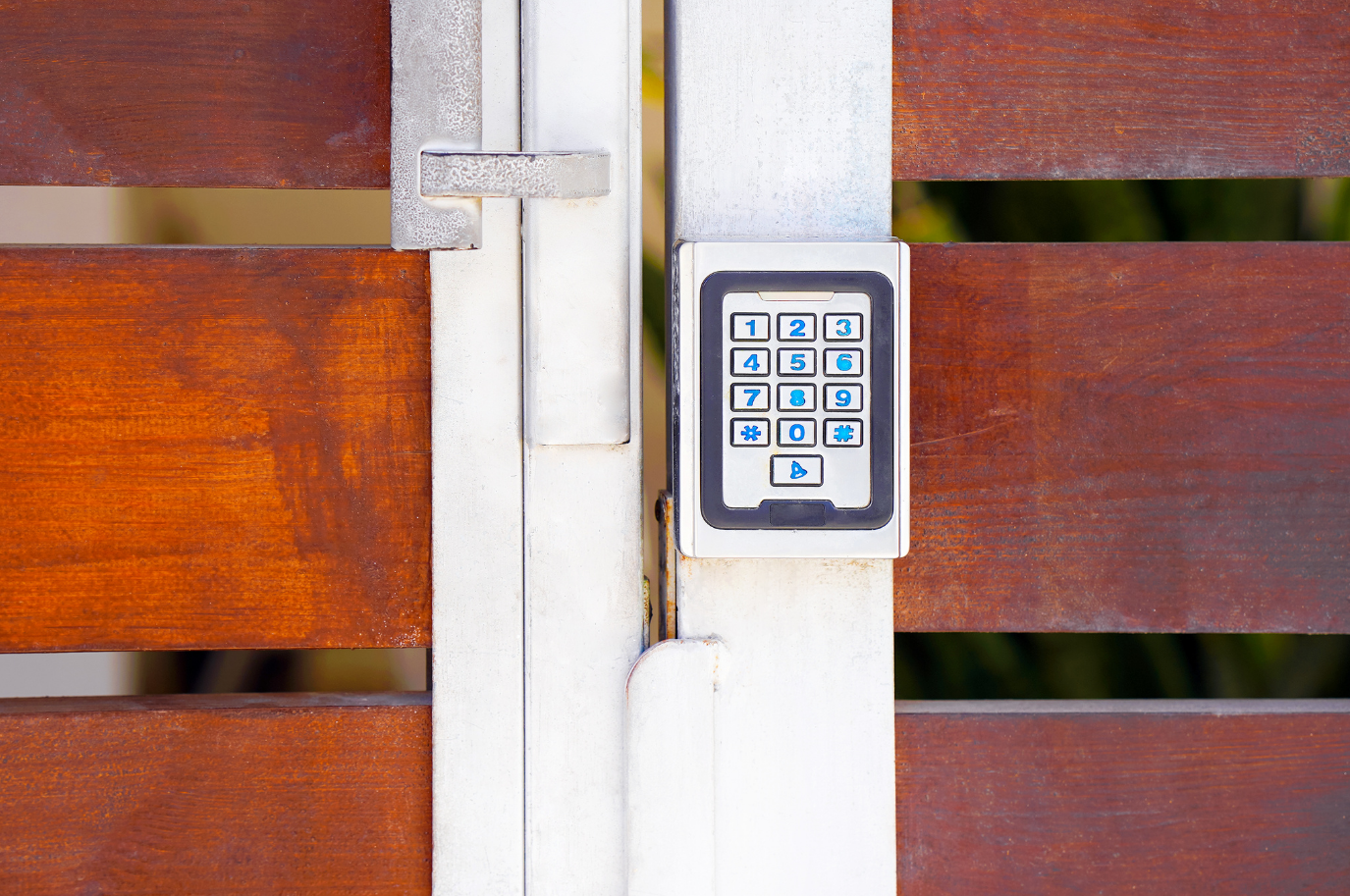Choosing between wired and wireless access control solutions is a critical decision for property owners and managers. Each option offers a unique set of advantages and potential drawbacks, making it essential to weigh the pros and cons carefully to determine which best suits your specific needs. This article delves into the key considerations surrounding wired and wireless access control, providing valuable insights to help you make an informed choice that aligns perfectly with your security requirements and operational preferences.
Installation Complexity
Installing a wired access control system typically involves routing physical cables, which can be a complex and time-consuming process. This often means drilling holes, concealing wires within walls, and ensuring cables are properly connected to access points. The intricacy of the installation process often requires skilled technicians and may disrupt normal operations during installation. However, once in place, wired systems are known for their reliability and stability, making them a preferred choice for environments where uninterrupted access control is paramount, such as high-security government facilities or critical infrastructure.
In contrast, wireless access control systems offer a significant advantage regarding installation simplicity. Since they rely on wireless communication protocols like Wi-Fi or Bluetooth, there’s no need for extensive cable routing or physical infrastructure modifications. This streamlined installation process reduces installation time and minimizes disruptions to your property. Wireless access control systems can be set up more swiftly, making them an excellent choice for properties where rapid deployment is crucial, such as commercial offices or residential complexes. Moreover, wireless systems are often modular, allowing for easy expansion without extensive rewiring.
When choosing between wired and wireless access control, the decision regarding installation complexity largely depends on your specific requirements and infrastructure. Wired solutions may be the more practical choice for pre-existing buildings with established cable infrastructure. Conversely, new constructions or properties where drilling and cable routing are impractical may find wireless access control systems more cost-effective and efficient. It’s essential to assess your property’s unique circumstances and consult with access control experts to determine which installation method aligns best with your goals.
Flexibility and Scalability
Wired access control systems can sometimes pose challenges when it comes to flexibility and scalability. These systems are typically designed with a fixed infrastructure in mind, which means that adding or relocating access points can be a labor-intensive and costly process. Expansion often requires running new cables, potentially causing disruptions to existing structures. Consequently, for properties with evolving access control needs or frequent changes in user access, the lack of flexibility can be a drawback.
Wireless access control systems shine in terms of flexibility and scalability. They are inherently modular and can be easily expanded or reconfigured to accommodate changing requirements. With wireless solutions, adding or repositioning new access points within the property is typically straightforward, as it doesn’t necessitate laying new cables. This flexibility is especially beneficial for properties that anticipate growth, need to adapt to changing access requirements, or simply want to take advantage of the latest technological advancements in access control.
When deciding between wired and wireless access control, it’s crucial to consider your property’s long-term needs and dynamics. If your property requires frequent adjustments to access points or has a potential for growth, wireless systems offer the agility to meet these demands efficiently. On the other hand, if your property has a relatively static access control layout and prioritizes long-term reliability, wired systems may still be a viable choice.
Scalability is closely linked to cost-efficiency. Wireless access control systems can offer cost savings over time by eliminating the need for expensive cable installations and minimizing disruptions. However, weighing these benefits against your property’s specific requirements and budget constraints is essential.
Reliability and Stability
Wired access control systems are well-regarded for their reliability and stability. These systems establish secure physical connections through hardwired cables, typically less susceptible to interference and signal disruptions. This robustness makes wired access control ideal for critical environments where uninterrupted access management is essential, such as government facilities, data centers, or industrial complexes. The predictable performance of wired systems ensures that access points consistently function as intended, minimizing the risk of unauthorized access.
Wireless access control systems have significantly improved reliability and stability in recent years. While early wireless systems may have faced occasional signal interference or reliability issues, modern wireless technologies, such as encrypted Wi-Fi or Bluetooth communication, have largely mitigated these concerns. However, it’s important to note that the reliability of a wireless system can still be influenced by factors like signal range, interference from electronic devices, or environmental conditions. Careful planning, including the strategic placement of access points and redundant communication paths, can enhance the stability of wireless access control.
When evaluating the reliability and stability of access control systems, it’s essential to consider your property’s specific characteristics and security requirements. Wired access control may be the preferred choice for properties that demand higher security and cannot tolerate any potential signal disruptions. In contrast, wireless access control can be an excellent option for properties where the convenience of installation and scalability is a priority, as long as it is implemented with attention to reliability-enhancing strategies.
Cost Considerations
The cost considerations for wired access control systems primarily revolve around the initial installation expenses. Setting up a wired system often requires substantial labor and materials for cable routing, drilling, and infrastructure modifications. The complexity of the installation process can result in higher upfront costs, including labor fees for skilled technicians. However, once installed, wired systems tend to have lower ongoing operational costs, as they typically require less maintenance and have longer lifespans.
Wireless access control systems offer cost advantages in terms of installation. The absence of extensive cable routing and infrastructure modifications reduces labor costs and minimizes disruptions during setup. This cost-effective installation process can make wireless solutions an attractive choice, especially for properties with budget constraints or those looking for a more agile deployment. However, it’s important to note that ongoing operational costs may vary depending on factors such as battery replacements for wireless devices and the need for periodic software updates.
When evaluating cost considerations between wired and wireless access control systems, it’s crucial to consider the Total Cost of Ownership (TCO). TCO includes the initial installation costs and long-term expenses related to maintenance, scalability, and potential upgrades. While wired systems may have lower ongoing operational costs, wireless systems can offer potential savings in installation and flexibility. Property owners should assess their budget constraints and long-term financial goals to determine which option aligns best with their TCO expectations.
Another cost-related aspect to consider is scalability and future-proofing. Wireless access control systems often provide more straightforward and cost-effective options for expanding or reconfiguring the system as your property’s needs change. This adaptability can lead to potential cost savings in the long run. However, it’s essential to strike a balance between upfront installation costs and the potential for future scalability when making your decision.
Maintenance and Upkeep
Wired access control systems are typically known for their low maintenance requirements once installed. Since they rely on physical cables and connections, there are fewer components that can fail or require regular attention. Maintenance tasks for wired systems often involve periodic checks of physical components like card readers, keypads, and controllers to ensure they function correctly. Overall, the simplicity of wired systems contributes to their reputation for minimal ongoing upkeep.
Wireless access control systems have their own set of maintenance considerations. While they are generally designed to be low-maintenance, specific elements may require attention. Wireless devices like card readers and wireless locks may rely on batteries for power. As a result, periodic battery replacements may be necessary. Additionally, ensuring the security and integrity of wireless communication is essential, which may involve regular software updates and security patches to protect against potential vulnerabilities.
Regardless of the type of access control system you choose, regular monitoring and support are crucial for ensuring optimal performance. Many access control providers offer remote monitoring services to detect and address issues promptly. Additionally, having a maintenance plan in place for wired or wireless systems can help prevent unexpected downtime and ensure that your access control system remains reliable and secure over time.
When deciding between wired and wireless access control, consider your property’s capacity for maintenance and upkeep. If you have the resources and processes in place to regularly monitor and maintain your system, the choice between wired and wireless may come down to other factors such as installation complexity and scalability. Consulting with access control experts can help you determine which system aligns best with your maintenance capabilities and objectives.
Security and Interference
When evaluating access control systems, the level of security they provide and their susceptibility to interference are critical factors to consider. Here, we compare the security features and potential interference issues associated with both wired and wireless access control solutions:
Wired Access Control:
- Hardwired connections offer a high level of security, as they are less vulnerable to external interference.
- Physical cables are difficult to tamper with, making it challenging for unauthorized individuals to gain access.
- The reliability of wired systems contributes to consistent security performance, especially in high-security environments.
Wireless Access Control:
- Modern wireless technologies employ robust encryption and security measures to protect communication between devices.
- While wireless systems are secure, they can be susceptible to interference from electronic devices, radio frequency interference, or signal jamming.
- Implementing secure Wi-Fi protocols and monitoring for unusual activity can help mitigate potential security risks.
Both wired and wireless access control systems offer robust security measures, but they come with their own unique considerations. Wired systems provide high security through their physical connections, while wireless systems employ advanced encryption and security protocols to protect communication. However, wireless systems must contend with potential interference challenges, which can be mitigated through careful planning and monitoring. Choosing the right system depends on your property’s security requirements and the steps you take to safeguard against potential interference.
Remote Management
In the modern world of access control systems, managing and monitoring your security infrastructure remotely has become increasingly crucial. Both wired and wireless access control systems offer remote management capabilities, albeit with differences in ease of use and accessibility:
Wired Access Control:
Wired systems can provide remote management capabilities, but they may require additional setup and infrastructure, such as VPNs or secure network connections, to enable remote access. Once established, you can manage and monitor access points and user permissions from off-site locations. This can be advantageous for property managers who require centralized control of multiple locations or for businesses with complex access control needs. However, it’s essential to consider the initial setup complexity when opting for remote management with wired systems.
Wireless Access Control:
Wireless access control systems often excel in remote management capabilities. They are designed with the flexibility to connect to the internet and cloud-based platforms easily. This allows for convenient and secure remote access to your access control system from virtually anywhere with an internet connection. Property owners and managers can swiftly adjust access permissions, receive real-time updates, and monitor system performance remotely. The user-friendly nature of wireless systems simplifies remote management tasks, making them an attractive option for those seeking efficient and accessible control.
The ability to remotely manage access control systems offers numerous benefits, including enhanced convenience, rapid response to security events, and streamlined administrative tasks. Whether you opt for wired or wireless access control, leveraging remote management capabilities can significantly improve the efficiency and effectiveness of your security operations.
Contact R3 Access
For personalized guidance and expert solutions tailored to your specific access control needs, contact R3 Access Inc. Our team of experienced professionals is ready to assist you in choosing the right access control system for your property. Whether you have questions about installation, maintenance, security, or any other aspect of access control, our experts are here to provide comprehensive information and assistance.


